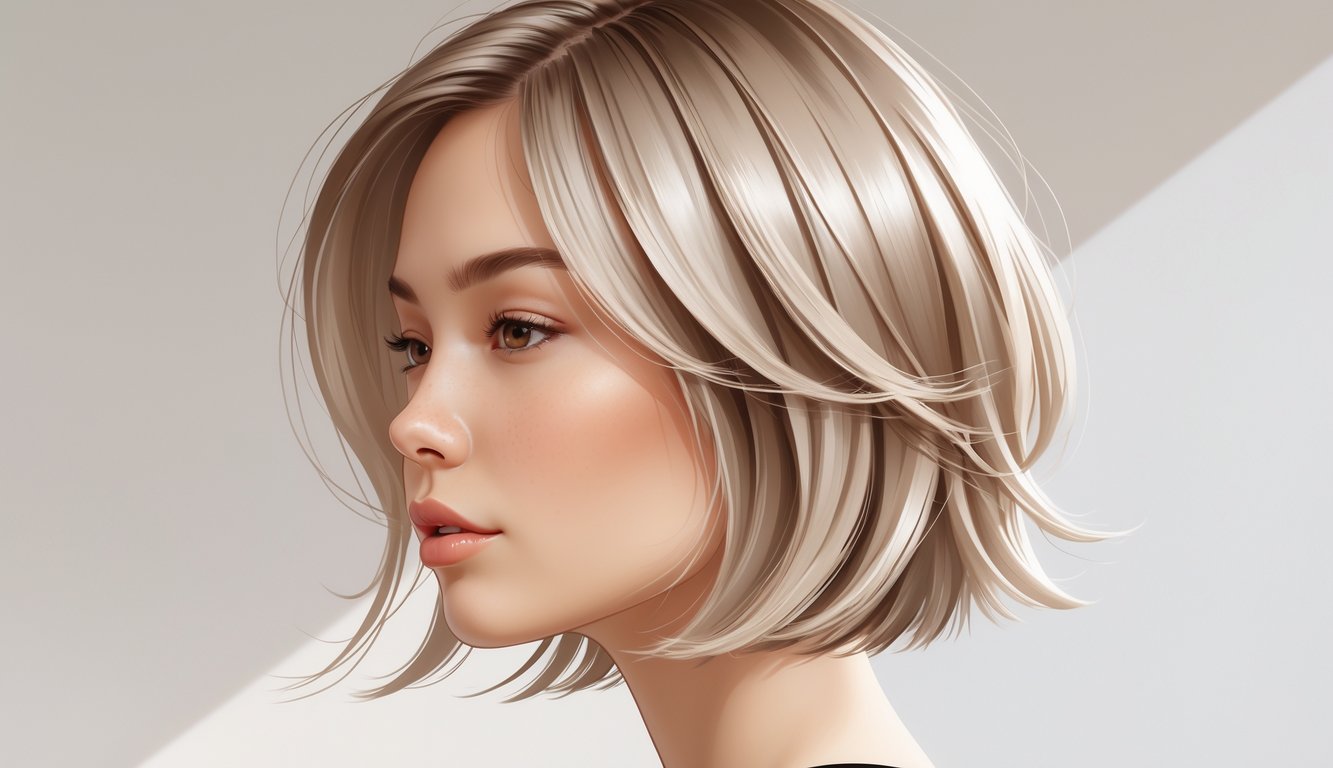
Key Layering and Texturizing Techniques
Confused by the lingo? Ghost layers, blunt ends, texturizing scissors—whatever. Somebody’s always going to grab thinning shears and ruin a perfectly good cut. Thick hair? Needs these new tricks or it explodes. Thin hair? Still needs dimension. Salons pretend there’s a secret formula, but I’ve seen stylists do these methods right in the open, no magic required.
Invisible and Ghost Layering
Okay, “ghost layers”—seriously, who came up with that?—are basically the haircut equivalent of gaslighting. You get them, but then you’re left wondering if anything even changed. My last client? She flat-out denied getting a cut. These sneaky sections hide under the top layer, so you keep your length but suddenly there’s dimension instead of that random mushroom poof. For anyone with heavy, wavy hair: it’s like, wait, why does my jawline look less…puffy? Eight weeks in, she’s still acting like I did nothing, but the hair says otherwise.
Apparently, ghost layering gets rid of “internal weight” by slicing with scissors in some secret pattern—no texturizers, no thinning, just a little less helmet, a little more bounce. I read somewhere (probably on some clickbait site) that curly hair air-dries better with these, especially if you slap on some curl cream and cross your fingers. The Hairstyles Weekly guide breaks it down, but, honestly, nobody warns you how hard it is to explain to your client that, yes, you did cut something, and, no, you didn’t ruin their hair. Stylists, please, just have the awkward consultation first.
Blunt Ends with Internal Layers
Blunt ends with internal layers? It’s a scam, but a good one. Everyone’s terrified of the triangle look, but if you don’t mess it up, you dodge it. The blunt edge stays, so people think it’s one length, but meanwhile, you’re hacking away underneath like a ninja, taking out the bulk where it matters—especially for thick hair. It’s almost like doing community service.
I always stick to scissors—razors are a hard no for me. The point is to keep the outside edge sharp and then sneak in, take out just enough so you don’t get that brick-on-your-head effect. For dense hair, this is why models look like they have effortless movement instead of that weird flip. Vakkar Salon has a whole article about it, but let’s be real: their diagrams are a lie. Nothing ever goes that smoothly.
Texturizing for Subtle Results
Ever seen someone go nuts with thinning shears? It’s a horror show. I tried it once, thought I was a genius, and gave my friend the world’s worst “poodle” cut. Texturizing is supposed to be subtle, not a total erasure. Real stylists use scissors, razors, sometimes weird combs with teeth so wide you wonder if they’re for hair or cheese. The trick: chunk out just enough for movement, but if you go overboard, the ends look like you chewed them.
Best method I’ve seen is mixing it up: feathering for bounce, choppy bits around the face, maybe a little razor action where hair gets heavy. Blow-drying with a round brush? Still underrated. If you find the right combo, you get volume that lasts longer than your patience. Hair Apex has a guide that’s actually useful, but, wow, nobody mentions how much your wrist will hate you halfway through. That’s the real advice.
Best Subtle Haircuts for Different Hair Types

Honestly, “low-maintenance” is a joke if your hair isn’t textbook straight or curly. Texture, density—every stylist has a theory, but the only thing that works is subtlety. Hidden layers, nearly invisible shifts, whatever you call it. Forget those dramatic layers from the early 2000s; it’s about movement you can’t see but somehow feel. Whether you blow-dry every day or just towel off and hope for the best, subtlety wins.
Fine and Finer-Haired Clients
Fine hair is just out here trying to make me look bad. I mean, I swear it gets flatter every time I blink. Then someone whispers “ghost layers” and suddenly my ponytail isn’t embarrassing. I ask for them when my hair starts collapsing before I even leave the house. Sarah Potempa on Byrdie claims they boost volume without screaming “layers!”—which, okay, sometimes, sure. The stylist just slices little sections at the crown or sides, grumbling about not thinning out the ends.
Volumizing spray? I use Kevin Murphy’s DOO.OVER because it’s the only thing that fakes a blowout for more than 20 minutes. The warning: don’t let anyone talk you into short layers if you don’t want accidental feathering. Stick to longer, face-hugging shapes. Random fact: hair fibers are, like, 50-100 microns wide (I read this in a trichology journal I regret subscribing to), so even tiny changes can make a difference. Avoid thinning shears unless you want to cosplay as a mushroom.
Thick Hair
Thick hair is just a workout disguised as vanity. Every time I blow-dry, my arms almost fall off, and I keep expecting the scissors to snap. The point isn’t to remove hair, just tame it. Someone explained “seamless layers” to me once and I nodded, but honestly, it’s just blending the ends so nobody can tell you did anything.
My stylist loves razors and slices hidden layers under the top, so I get less volume but keep my length. No blocky steps, none of those chunky disasters from the late 2000s. When it’s humid, shaping underneath the top layer saves me from triangle head. I keep Moroccanoil around for those mornings when my hair decides to become an actual helmet. Maintenance? Ugh, six-week trims or everything goes haywire—frizz, flatness, you name it.
Curly and Wavy Hair
Asking for “subtle layers” with curls is like playing hair roulette. Finer curls don’t want steps, dense ones just explode if you mess up. The trick seems to be underlayer sculpting. Deva-certified stylists carve curves by hand, half-dry, half-damp, because curls change their mind every single day.
Diffusers don’t magically make curls better, but Ouidad’s Advanced Climate Control gel actually does help keep the cut together—especially when you’re sweating on the subway. There’s no universal cut; sometimes I need hidden layers, sometimes external ones. And honestly, the best layers just vanish into the curl pattern, so half the time I forget I even got them until wash day.
Straight Hair
Straight hair is like the overachiever of the group—flat, shiny, and boring if you don’t do something sneaky. I go for subtlety because blunt lines make me look like I’m wearing a helmet, but obvious layers just stick out in weird directions. “Invisible layers,” as hyped by Glamour, are everywhere. Warren’s move is to keep the bottom straight and just feather in shorter bits underneath, so the ends bounce but don’t scream “I got a shag.”
Salt sprays? Useless on my hair—just sticky regrets. The only trick that works: snipping a little shorter at the cheekbones or collarbone, so it frames my face but leaves the rest heavy in the back. Straight hair shows every single layer if it’s dry or split, so deep conditioner is a must. The best part? People ask if I changed shampoo, not if I got a haircut.



